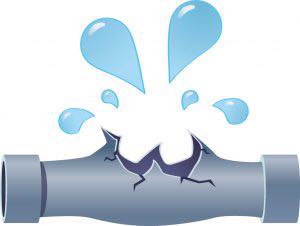|
Toilet Leaks
Adjusting your toilet flapper can reduce water loss. If your toilet runs for a long time or suffers from an occasional "phantom" flush, you may have a leak. More than 20 percent of gravity-flush toilets leak. Follow these tips to find and stop toilet leaks. If you are not sure about your ability to perform any of these steps, please consider contacting a licensed plumber. Note: These tips pertain to traditional gravity-flush toilets and not high-efficiency toilets. Periodic Refills Without Flushing "Ghost" or "phantom" flushing is usually the result of a worn rubber flapper that is allowing water to seep from the tank into the bowl and down the sewer. An improperly adjusted flapper chain also could cause the problem. Conduct a simple dye test to see if water is seeping from the tank. Use food coloring or a powdered drink mix to noticeably color the water in the toilet tank.
Note: If you normally use products that color the water in the tank or bowl such as a sanitizer, remove them and flush the toilet until the water in the bowl and tank are clear before you begin the dye test. Continuous Trickling A continuous trickling sound usually means water is running over the top of the overflow tube inside the tank. Follow these steps to help resolve the issue. Remove the toilet tank lid and conduct a visual inspection. Flush the toilet and observe the process. Look for obvious problems. Check to see if the refill water level is set properly and does not rise over the top of the overflow tube. To lower the water level, adjust the float lower. On a bulb-on-arm style toilet, adjust the screw near where the float arm attaches to the float valve. On newer valve and float units, adjust the float by moving the float downward on the vertical rod. If the toilet continues to run, even with the float adjusted, you should replace the refill valve with a new unit from your local hardware store. Replacing Worn Parts Turn off the water supply valve to the tank. This is usually located on the wall under the toilet. Flush the toilet to drain the water. Select appropriate replacement parts from the hardware store and follow the manufacturer's directions to install them. After installing the parts, turn the water on and test-flush the toilet once or twice. If you replaced the flapper, perform the dye test again to ensure the flapper fits properly. Not all flappers fit properly in all toilets so you may still have a leak. In some cases, a leaking flapper may be the result of a worn surface on the seat against which the flappers rests. You can try smoothing the seat with steel wool or a scouring pad. If this doesn't correct the problem, you may need to replace the flapper seat and overflow tube assembly. Most major plumbing manufacturers have detailed assistance on their websites as well as toll-free telephone numbers to call for assistance. |
Locate your water meter
The first step is to check your water meter for movement. Look at the top of the meter. You'll notice a triangle called a flow indicator. The triangle (flow indicator) will move whenever water is passing through it. If your meter doesn't have a flow indicator, you can use the sweep hand on the register to indicate water loss. If either the flow indicator or the sweep hand is moving, you may have a leak. Frost Free Hydrants
Frost Free Hydrants are designed to allow water to flow underground when the hydrant is turned off to prevent freezing. This unique design also allows water to leak from them without being seen. Place your ear on the top of the Frost Free Hydrant, if you hear a hissing sound you will need to either adjust the plunger inside or possibly replace your hydrant. Faucet Leaks
Leaky faucets waste several gallons of water each day. A leaky faucet can waste several gallons of water per day. In addition, a dripping faucet may deteriorate a sink bowl and provide moisture for ants, flies and other insects. With so many types of faucets on the market, the best source of repair information for a specific product may be the manufacturer's website. However, most faucets have a similar assembly with the same basic parts. The majority of bathrooms are equipped with mixing faucets or stem faucets, which control the temperature settings through the use of the "hot" and "cold" handles. Both faucets have two individual units which may need to be repaired. A repair kit can be purchased at your local hardware store. The kit should include a special adjusting ring wrench, seals, springs and O-rings. Also, washer assortment kits may be more cost-effective than buying washers individually. Fixing a Faucet
|
"This institution is an equal opportunity provider, and employer."

